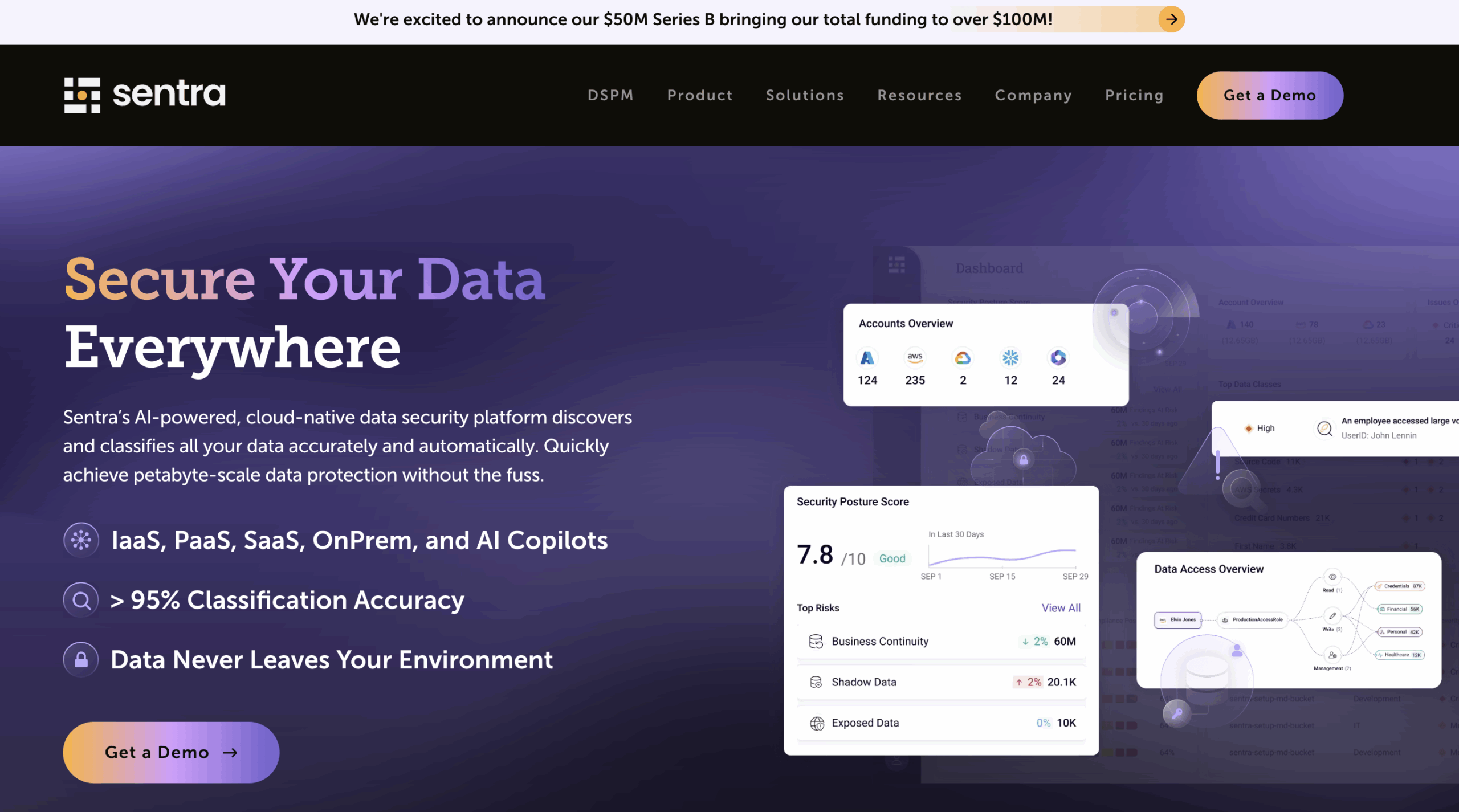Sentra just secured $50 million in Series B funding, and it’s clear what the cloud data security startup is focused on next—keeping sensitive data out of misconfigured AI pipelines.
With backing from Key1 Capital, Bessemer Venture Partners, Zeev Ventures, Standard Investments, and Munich Re Ventures, the raise pushes Sentra’s total funding to over $100 million. The company, based in Israel with offices in New York, says the new capital will go toward expanding engineering resources and doubling down on AI-aware data protection features.
If you’ve been tracking the rise of Data Security Posture Management (DSPM) tools, you’ll know Sentra is part of that wave—but they’ve evolved. The platform now includes controls that actively monitor and restrict sensitive or regulated data from being used in AI model training and prompt injections.
What makes their approach interesting is how it works. Sentra uses in-place scanning—no need to move data around—to map data stores across AWS, Azure, GCP, and on-prem environments, then classifies content using large language model-based pattern matching. It flags policy or permissions gaps before they become exposure risks.
The company claims this method is faster, more cost-effective, and more scalable than traditional approaches. And customers are noticing—CEO Yoav Regev says revenue grew over 300% last year, with Fortune 500 companies adopting Sentra for their generative AI initiatives.
Regev puts it bluntly: “AI is only as secure as the data behind it.” That’s the driver behind their push to help organizations discover “shadow data”—data assets that exist outside normal monitoring and could inadvertently feed into AI workflows or analytics pipelines.
As more enterprises lean into multi-cloud environments and large-scale AI adoption, Sentra’s timing seems spot-on. The stakes are no longer just about compliance. It’s about controlling the data before it becomes part of the model.

Leave a Reply